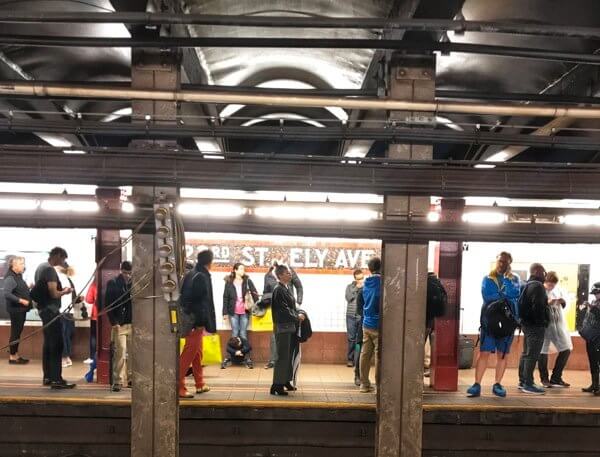By Mark Hallum
Subway meltdowns and hobbled commuter train service defined 2017 for straphangers, who found their day-to-day travel obstructed by the very system driving the city’s economic engine.
Rampant, system-wide delays from signal and electrical system failures in the subway coupled with a repair backlog in Penn Station that required eight weeks of reduced LIRR service, was dubbed the “summer of hell” by Gov. Andrew Cuomo.
Electrical failures in the East River tunnels and a malfunctioning switch point were the main causes behind Penn Station’s troubles and LIRR riders paid the price in form of cancellations.
In 2011, Cuomo peeled back the Payroll Mobility Tax, which helps fund the MTA, but promised to replace those funds every year, according to transit advocacy group, Riders Alliance.
For six years, Cuomo’s office kept with its commitment to replace the MTA funds each year by contributing between $307 million and $311 million every year. This year, however, Cuomo proposed to only reimburse the MTA with $244 million, a 21 percent reduction from last year’s $309 million, which will left a $65 million gap.
On one day in April, 44 trains were delayed 21 trains were canceled from a New Jersey Transit derailment.
As the problems mounted in Penn Station in April, Amtrak’s CEO, Wick Moorman, admitted to letting the whole region down when he revealed the tracks in Penn Station had been in need of repair for a prolonged period of time and were the cause of two recent derailments that disrupted LIRR travel in a transit calamity that played out across several states.
Amtrak announced it would take six weeks to deal with the issues in the nation’s largest rail hub, and before too long, six weeks turned to eight. Twenty percent of the tracks would be out of service in July and August. The “summer of hell” was in full swing.
Cuomo’s attempt to salvage the situation began with the re-appointment of former MTA Chair Joe Lhota, whom he tasked with rebuilding the state agency and sparing no expense to get the subways back on track.
In the Hammerstein Ballroom at the Manhattan Center in June, Cuomo called for a state of emergency to expedite technology upgrades such as the replacement of the 19th century equipment which comprises the signal system and new subway cars as the “summer of hell” approached.
Lhota was charged with creating a short- and a long-term plan to stabilize then modernize the subways.
“The current state of decline is wholly unacceptable. We’re going to do something and we’re going to do something about it now,” Cuomo said in June. “Today, I am asking Joe Lhota to do a reorganization plan for the MTA in 30 days. Start with a blank piece of paper. There are no givens, there are no sacred cows. Design an organization that can perform the function rather than the organization that exists today, which is a longstanding bureaucracy that has evolved over time.”
Lhota declared a war on trash, the main culprit behind track fires, and announced infrastructure upgrades to signals and a pilot program to remove some seats crowded trains.
to accommodate 25 extra people per car.
A long-term strategy has never been made public.
Lhota’s short-term plan turned out to no bargain either, at over $800 million and served as a distraction as city and state leaders bickered over who should pay up.
Lhota and Cuomo asked for a 50/50 split with the de Blasio administration, which refused on the grounds the MTA would not use the funds wisely considering its financial woes.
But Lhota reminded the city of why the MTA manages the city transit in the first place.
The 1970s were a disastrous period for the subways. Graffiti covered much of the surface of trains while crime, often violent, was common. It was during this time the Guardian Angels, founded by Curtis Sliwa, rose to prominence by protecting commuters through peacekeeping vigilantism. Modern New Yorkers would recognize many of the service inefficiencies during this time compared to today in terms of breakdowns.
“What happened in 1981, was that the city, because of its fiscal crisis was no longer funding the capital needs of any part of the city of New York, most notably its transit system,” Lhota said. “For those of you who were around in the late ’70s, early ’80s, you remember the subways were in terrible repair – terrible situation, graffiti, tens of thousands of breakdowns every year.”
One of the many issues exacerbating the transit crisis in the city has come from ridership far exceeding the level the system was designed to accommodate.
A system which was built to support a ridership of about 5 million per year saw this number climb to about 6 million people per day starting in 2014.
The No. 7 train has become a popular example for the city’s transit woes in that the signal system is over a century old and the development of the basic design goes back to the late 19th century. The No. 7 is now said to be at maximum capacity and will only get worse with increased ridership from new development around Sunnyside Yards, according to Access Queens founder Melissa Orlando.
Pushed to the limit, the No. 7 will only be able to run two extra trains per hour with the new signal upgrades.
Cuomo is looking to tighten the MTA’s belt and prevent funds from slipping away.
A report from the Citizens Budget Commission, a non-profit organization which studies government spending, said a bill to allow bus drivers to give out an extra free transfer to straphangers would see the MTA lose up $40 million annually.
On Dec. 21, Cuomo vetoed the bill.
Reach reporter Mark Hallum by e-mail at mhall































